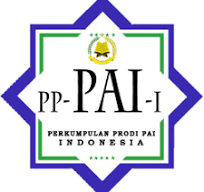PENGARUH PENGGUNAAN METODE DRILL BERBANTUKAN MEDIA KARTU UNTUK PENGUASAAN HUKUM TAJWID NUN MATI/ TANWIN PADA SANTRI DI TPA SIDOMULYO KOTA PALANGKA RAYA
DOI:
https://doi.org/10.54069/attaqwa.v18i2.260Keywords:
Drill method, tajwid lawAbstract
This research departs from the many assumptions of society regarding the ability to recite the children in the TPA. The community assumes that students who carry out learning at the TPA have the ability to read the Qur'an properly and correctly. However, there are still some students who are still lacking in reading the Qur'an. Therefore, a change is needed to improve the students' learning outcomes to read the Qur'an in accordance with recitation. One of them is by choosing the right steps in understanding the learning of recitation of nun mati/tanwin by using the drill method with the help of tajwid card media. This study aims to determine the implementation of the use of the card-assisted drill method for mastering the law of tajwid nun mati/tanwin, and to determine the effect of using the card-assisted drill method for mastering the law of tajwid nun mati/tanwin. This research uses mixed methods research. The researcher wants to use the design. The exploratory sequential design is a data collection that begins with collecting qualitative data and then continues with quantitative data collection. The research design that the researcher will use in this study is a single group pretest-posttest design (one group pretest-posttest pesign). The data collection techniques used were observation, interviews (with a minimum number of 3 informants), tests, and documentation. The population of the study was all the adolescent students of TPA Sidomulyo. Researchers will use a total sampling technique. The sample in this study used a class of teenagers at the TPA Sidomulyo Village which amounted to 30 students. The use of the drill method in the aid of card media has no impact/influence on the legal mastery of tajwid nun mati/tanwin at the Sidomulyo TPA. In the experimental class the average pretest was 47.5, then increased in the posttest with an average of 66.5. The N-gain in the experimental class showed an increase in understanding or mastery of the law of recitation of nun mati/tanwin with a value of 0.275 in the medium category.
Downloads
References
Abdul Majid, 2013, Strategi Pembelajaran, Bandung: PT Remaja Rosdakaraya
Effendy, Onong Uchjana. 1989. KAMUS KOMUNIKASI. Bandung : PT. Mandar Maju.
Djamarah, S. B. 2002. Strategi Belajar Mengajar. Jakarta: PT Rineka Cipta.
Djamarah, S. B. 2008. Strategi Belajar Mengajar. Jakarta: PT Rineka Cipta.
Ismail. 2008. Strategi Pembelajaran Agama Islam berbasis PAI. Semarang: Rasail.
Mufarokah, A. 2009. Strategi Belajar Mengajar. Yogyakarta: Teras.
Sudjana, N. 2002. Dasar-Dasar Proses Belajar Mengajar. Bandung: Sinar Baru.
Sugiyono. 2013. Metode Penelitian Kuantitatif, Kualitatif dan kombinasi (mixed methods). Bandung: Cet. IV Alfabeta.
Roestiyah. 1985. Strategi Belajar Mengajar. Jakarta: Bina Aksara. Roestiyah. 2012. Strategi Belajar Mengajar. Jakarta: Rineka Cipta. Roestiyah. 2008. Strategi Belajar Mengajar. Jakarta: Rineka Cipta.
Rukminingsih, d. 2020. Metode Penelitian Pendidikan: Penelitian Kuantitatif, Penelitian Kualitatif, Penelitian Tindakan Kelas. Yogyakarta: Erhaka Utama.
Undang – Undang Nomor 20 Tahun 2003 tentang Sistem Pendidikan Nasional
Zuhairini. 1983. Metode Khusus Pendidikan Agama. Surabaya: Usaha Nasional. Rukminingsih, d. 2020. Metode Penelitian Pendidikan: Penelitian Kuantitatif, Penelitian Kualitatif, Penelitian Tindakan Kelas. Yogyakarta: Erhaka Utama.
Downloads
Published
How to Cite
Issue
Section
License
Copyright (c) 2022 Yuliani Yuliani

This work is licensed under a Creative Commons Attribution-NonCommercial 4.0 International License.





